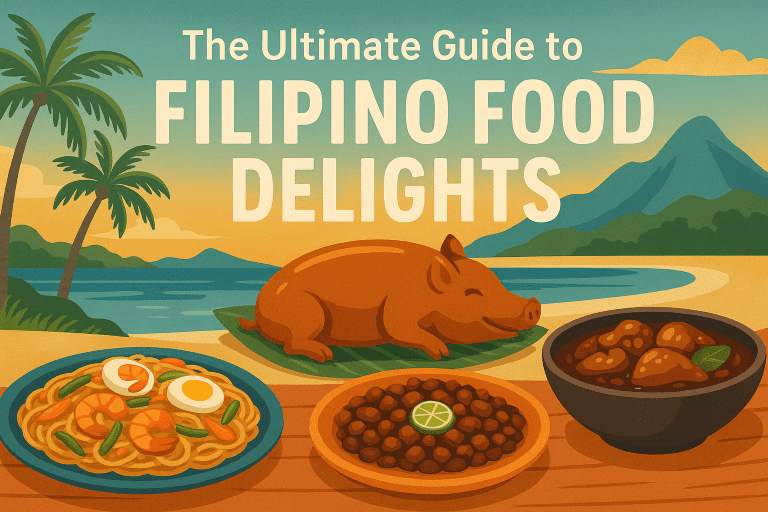
As darkness descends over Penang, Malaysia, a different kind of energy awakens.
The tropical heat softens, lights flicker on along bustling streets, and the aroma of simmering broths and sizzling woks fills the air. For many, the night truly begins when the late-night hawker stalls open, offering comfort and communion through steaming bowls and flavorful plates. The culture of late-night eating, or “supper” as it’s often called in Malaysia, is woven into the social fabric. It’s a time when friends gather after work or social events, families head out for a casual meal, or simply when the craving for something specific strikes under the cool night sky.
Unlike formal dining, supper is typically enjoyed at open-air hawker centres, roadside stalls, or unassuming coffee shops that transform after dusk. This environment fosters a sense of community; strangers share tables, the sounds of cooking mingle with lively conversation, and the focus is squarely on the food itself – often prepared before your eyes with practiced movements. It’s a window into the casual, yet profound, role food plays in connecting people here.
Penang’s late-night culinary landscape is a testament to its diverse population, drawing influences primarily from Chinese, Malay, and Indian communities, alongside unique Nyonya adaptations. This fusion results in a spectrum of flavors, textures, and aromas available well into the early hours. From rich, complex curries to smoky stir-fries and sweet, cooling desserts, the late-night offerings provide a comprehensive, objective sensory experience of the island’s gastronomic soul.
Here are 10 late-night foods you can find in Penang, Malaysia, and insights into where they are typically served:
1) Char Kway Teow
Char Kway Teow is perhaps the quintessential Penang street food, and many stalls operate late to satisfy persistent cravings. This dish consists of flat rice noodles and sometimes yellow noodles stir-fried in a scorching hot wok with dark soy sauce, light soy sauce, chili paste, a small amount of belacan (shrimp paste), prawns, cockles (a type of small clam), bean sprouts, chives, and sometimes slices of Chinese sausage and crispy pork lard. The defining characteristic is the intense smoky aroma and flavor imparted by the high heat of the wok, known as “wok hei.” The process involves rapid, precise movements, tossing the ingredients constantly against the metal surface, creating a slight char on the noodles and other components.
Objectively, the dish presents a spectrum of textures: the smooth, slightly chewy noodles, the crisp bean sprouts, the yielding texture of cooked prawns and cockles, and the crunch of lard. The aroma is a complex blend of savory soy, pungent seafood notes from the belacan and cockles, and the unmistakable scent of charring oil and noodles.
Where to find it late: Several hawker centres and roadside stalls remain open. Look along Chulia Street, particularly near the junction with Carnarvon Street, where some stalls operate into the late hours. Also, check specific late-night hawker zones like those around Macalister Road or New Lane, although timings can vary. Some independent coffee shops with individual hawkers also serve this late.
2) Hokkien Mee (Penang Style)
Penang Hokkien Mee, also known locally as Hokkien Prawn Mee, is distinct from its Singaporean counterpart. This is a robust noodle soup featuring a deeply flavorful broth made from simmering prawn heads and shells, pork ribs, and other aromatics like shallots and chili. The noodles are typically a mix of yellow egg noodles and rice vermicelli. It is served topped with slices of lean pork, prawns, hard-boiled egg, bean sprouts, water spinach (kangkung), and a crucial dollop of spicy chili paste on the side, which can be mixed into the soup to increase its heat and depth. Some vendors add crispy fried shallots or pork lard croutons.
The broth is the soul of the dish, presenting a rich, reddish-orange hue derived from the prawn shells. Its aroma is intensely savory and oceanic, with underlying sweet notes from the pork. The texture of the noodles is varied, with the springy yellow noodles contrasting the softer vermicelli. The accompaniments add further textural layers – firm pork, tender prawns, crisp vegetables, and the crumbly egg yolk. Adding the chili paste introduces a sharp, fiery element that cuts through the richness of the broth. Preparing the broth is a time-consuming process, often started hours before serving, ensuring its depth of flavor for the late-night crowd.
Where to find it late: Late-night Hokkien Mee stalls can be found in areas with high supper traffic. Look around Lebuh Presgrave (Presgrave Street), known for its evening hawkers, or check out late-night coffee shops in areas like Georgetown. Some larger food courts might also have late-operating stalls.
3) Nasi Goreng (Fried Rice)
Nasi Goreng, or Indonesian/Malaysian fried rice, is a ubiquitous late-night comfort food across the region. In Penang, you’ll find variations typically served at Malay or Mamak stalls. It involves stir-frying cooked rice with various ingredients such as eggs, chicken or beef pieces, prawns, vegetables like carrots and peas, and often flavored with soy sauce, chili paste (sambal), and sometimes shrimp paste. It’s frequently garnished with sliced cucumber, tomato, and often served with a fried egg on top and a side of crispy fried shallots or keropok (crackers).
The visual presentation varies depending on the ingredients used, but typically shows rice grains coated in a brownish sauce, interspersed with colorful additions. The aroma is savory and slightly spicy, with notes of wok-fried rice and sambal. The texture is primarily that of firm rice, contrasted by the protein (chewy chicken or beef, yielding prawns), softer vegetables, and the potential crispness of fried shallots or crackers. A fried egg adds a runny or firm component depending on preparation. This is a versatile dish, often prepared quickly to order.
Where to find it late: Mamak stalls are reliable sources for late-night Nasi Goreng, as they often operate 24 hours or until the early morning. Explore areas like Lebuh Chulia, Jalan Transfer, or simply look for brightly lit Mamak restaurants throughout Georgetown and beyond. Many standard Malay or Chinese hawker stalls also serve this late.
4) Roti Canai and Murtabak
Originating from Indian Muslim (Mamak) influence, Roti Canai is a type of flatbread made from wheat flour, water, and fat, traditionally ghee. The dough is repeatedly stretched, folded, and flattened into a thin sheet before being cooked on a hot griddle with oil. This process creates a layered texture. It’s typically served with dhal (lentil curry) and other curries (fish or chicken curry) for dipping. Murtabak is a variation where the stretched dough is filled with minced meat (chicken or beef), onions, and egg before being folded and cooked on the griddle, resulting in a savory, stuffed parcel.
Roti Canai, when prepared correctly, has a flaky, crispy exterior and a soft, slightly chewy interior. Its aroma is one of cooked dough and oil, complemented by the fragrant, spiced aromas of the accompanying curries. Murtabak is denser and richer, with a savory filling encased in the flaky dough. The sound of the dough being slapped and stretched before cooking is a characteristic part of the preparation experience. The curries offer a range of flavors, from the earthy, mild spice of dhal to the more intense, layered spices of meat curries. The simplicity and accessibility of Roti Canai make it a popular late-night choice.
Where to find it late: Mamak stalls are the primary venues for Roti Canai and Murtabak, and they are abundant and typically open late. Look for popular Mamak chains or independent stalls in areas like Chulia Street, Transfer Road, or anywhere you see a cluster of late-night eateries.
5) Sup Kambing (Lamb Soup)
Sup Kambing is a rich, hearty, and aromatic lamb soup, often served at Mamak stalls. It is prepared by slow-simmering lamb pieces (often including bone marrow) with a complex blend of spices such as ginger, garlic, star anise, cardamom, cloves, and cinnamon, along with sometimes tomatoes and potatoes. The long cooking time renders the lamb exceptionally tender and infuses the broth with deep, savory flavors. It is usually garnished with chopped spring onions, fried shallots, and sometimes a wedge of lime is provided on the side.
Visually, the soup is a murky, reddish-brown color, often with pieces of lamb and bone visible. The aroma is intensely fragrant and warming, dominated by the earthy, sweet spices and the deep, savory scent of lamb broth. The texture of the lamb is typically fall-apart tender. The broth has a substantial mouthfeel, coats the palate, and offers a flavor profile that is savory, mildly sweet from the spices, and possesses a subtle gamey undertone from the lamb. The garnishes add freshness and a textural contrast. It is often served with a piece of Roti Benggali (a type of Indian-style bread) for dipping into the soup.
“Street food is culture. It’s about the people, the history, the stories.”
This sentiment resonates strongly with a dish like Sup Kambing, reflecting the cultural significance of late-night nourishment.
Where to find it late: Mamak stalls are the best places to seek out Sup Kambing late at night. Specific locations known for their supper crowd and Mamak fare, like those near Penang Road or throughout Georgetown’s grid of streets, are good starting points.
6) Wantan Mee
Wantan Mee in Penang is typically served “kon loh” style, meaning the noodles are tossed in a dark soy sauce and oil mixture rather than served in soup. It features thin, springy egg noodles, topped with slices of char siu (barbecued pork), blanched leafy greens (like choy sum), and wantans (dumplings). The wantans can be served in a small bowl of clear broth on the side, or sometimes included dry with the noodles. Some vendors also add fried wantans for a crunchy element. The sauce mixture for the noodles often includes dark soy sauce, light soy sauce, sesame oil, and sometimes a small amount of lard or cooking oil.
The noodles are characteristically bright yellow and have a firm, bouncy texture when cooked correctly. The char siu provides a reddish hue and a savory-sweet flavor with a slightly firm texture. The greens offer a contrasting green color and a tender texture. The wantans, whether boiled or fried, add pockets of savory meat filling encased in delicate wrapper. The aroma is primarily savory from the soy sauce and pork, with notes of sesame oil. When mixed, the sauce coats the noodles, providing a glistening appearance and a depth of savory flavor that clings to each strand.
Where to find it late: While many Wantan Mee stalls are morning or lunchtime affairs, some in busier hawker areas or coffee shops catering to the supper crowd remain open. Explore areas like Chulia Street or discover late-night coffee shops scattered within residential or commercial hubs.
7) Koay Teow Thng (Flat Rice Noodle Soup)

Koay Teow Thng is a comforting, clear noodle soup made with flat rice noodles. The broth is typically prepared by simmering pork and chicken bones for many hours, resulting in a light yet flavorful base. It is served with slices of pork, chicken shreds, fish balls, fish cakes, and sometimes duck meat or minced pork balls. Garnishes often include spring onions, fried shallots, and white pepper. Some variations include offal like pork intestines or liver.
The broth is clear or slightly cloudy, with a delicate, savory aroma of simmered bones and meat. The flat rice noodles are smooth and soft. The texture of the toppings varies – firm fish balls and cakes, tender meat slices, and springy meat balls. The visual is often light, with the white noodles and clear broth punctuated by the pinkish-brown meat and vibrant green onions. The simplicity of the broth allows the individual flavors of the ingredients to come through. It is a less intense, more gentle option compared to some of the spicier or richer late-night dishes.
Where to find it late: Late-night Koay Teow Thng stalls are commonly found in coffee shops that extend their operating hours into the night. Look in areas known for traditional coffee shops like parts of Georgetown, or specific late-night hawker zones.
8) Lok Lok
Lok Lok is a communal, interactive dining experience popular late at night. It involves skewers of various raw or semi-cooked food items – including seafood (prawns, squid, fish balls), meats (chicken, pork), vegetables (broccoli, mushrooms, corn), and various processed items (sausages, tofu). Patrons select skewers from a display and then cook them themselves by dipping them into a communal pot of boiling water or broth heated at their table. Cooked skewers are then typically dipped into a variety of sauces, such as peanut sauce, chili sauce, sweet sauce, and sometimes a unique green spicy sauce.
The visual appeal comes from the colorful array of skewers on display. As items cook, they change appearance – prawns turn pink, vegetables soften. The aroma is primarily that of hot broth and cooking ingredients, overlaid with the distinct fragrances of the various dipping sauces. The texture depends entirely on the selected items and cooking time, ranging from firm seafood to tender vegetables or chewy processed items. The sauces offer a wide range of flavors – sweet, savory, intensely peanut-rich, or fiery chili. The act of cooking and dipping is a significant part of the experience.
Where to find it late: Lok Lok vans or stalls often set up in busy areas in the evening and operate late into the night. Prominent spots include Gurney Drive (though some stalls may close earlier than others), certain sections of Macalister Road, and pop-up locations in areas frequented by the supper crowd. They are identifiable by their refrigerated displays filled with skewers.
9) Apom Balik (Thick Sweet Pancake)
For those seeking something sweet late at night, Apom Balik offers a comforting option. This is a thick, folded pancake made from a batter of rice flour, sugar, eggs, and coconut milk, sometimes with a touch of yeast for leavening. It is cooked on a round, cast-iron griddle, similar to a large crepe pan, but typically thicker. While cooking, the surface is sprinkled with toppings, most commonly crushed peanuts, sweet corn kernels, and sometimes sugar or banana slices. Once cooked through, it is folded in half, encasing the warm fillings.
The pancake itself has a golden-brown exterior, sometimes with slightly crispy edges, and a soft, porous interior. The aroma is sweet, with notes of cooked batter and roasted peanuts. The texture is a combination of the soft pancake, the slight crunch of peanuts, and the tender burst of sweet corn. The sweetness level is pronounced, providing a warm, comforting dessert experience. Watching the batter bubble and set on the griddle, and then the generous scattering of toppings, is part of the visual appeal.
Where to find it late: Apom Balik stalls often operate within larger hawker centres that have late-night hours or as standalone stalls in busy supper areas. Look in locations like New Lane Hawker Centre or smaller clusters of stalls along streets like Burma Road.
“Penang’s street food scene is a vibrant, chaotic symphony of smells, sounds and tastes that pulses day and night.”
This quote captures the essence of the late-night food environment, a sensory overload that includes the sweet offerings like Apom Balik alongside savory options.
10) Yong Tau Foo
Yong Tau Foo translates literally to “stuffed tofu,” but the dish encompasses a variety of food items, typically including tofu, fish balls, fish paste-stuffed vegetables (like bitter gourd, okra, chili, eggplant), and sometimes fried items or dumplings. Patrons select their desired items from a display, which are then cooked by the vendor, usually by blanching in boiling water or frying. The cooked items are served either in a clear broth, similar to Koay Teow Thng broth, or “dry” tossed in a light sauce, often accompanied by a sweet brown sauce and a chili dipping sauce on the side. Noodles (rice noodles or vermicelli) can be added to the soup or served alongside the dry version.
Visually, Yong Tau Foo stalls display a colorful assortment of items. The cooked dish presents a mix of textures – the soft tofu, firm or springy fish paste fillings, tender vegetables, and potentially crispy fried items. The broth, if chosen, is light and savory. The dipping sauces provide concentrated points of flavor – the sweet sauce offering molasses-like notes, and the chili sauce delivering heat and tang.
Where to find it late: Late-night Yong Tau Foo can be found in coffee shops or hawker centres that operate into the evening. Look for stalls in supper hotspots around Georgetown or other populated areas. The selection of items available late might be slightly reduced compared to daytime, but the core offerings are usually present.
Penang’s Late-Food Scene
Navigating the late-night food scene in Penang is an adventure in itself, a journey through narrow streets and bustling open-air spaces guided by the glow of neon signs and the inviting aromas of cooking food. The specific opening hours of individual stalls can be fluid, often depending on factors like ingredient availability, crowd size, and even the vendor’s energy levels. However, focusing on known supper hubs and Mamak stalls generally yields success for finding sustenance after hours. Penang remains one of the best Asian cities for first-time travelers seeking authentic culinary experiences.
Exploring these street eats provides more than just a meal; it offers insight into the daily lives and culinary heritage of the people who call Penang home. It’s a place where culinary traditions are preserved and adapted, cooked with practiced skill by vendors who have often honed their craft over decades. The simple setting of a plastic table and stool on a pavement becomes a stage for experiencing profound flavors and connecting with the rhythm of the city at night.
To make the most of your late-night food exploration, consider starting your evening in areas known for their active supper scene, like Chulia Street or certain Mamak restaurant strongholds. Be prepared for potentially humid conditions, the lively noise of urban life, and the possibility of sharing tables with strangers – all part of the authentic experience. Carry small denominations of Malaysian Ringgit, as most hawker stalls operate on a cash-only basis.
Conclusion
As you conclude your late-night culinary adventures in Penang, you realize that this city’s food scene isn’t confined to daylight hours. The energy simply shifts, offering a different perspective on its vibrant character. The simple act of enjoying a bowl of noodles or a piece of Roti Canai under the glow of a street lamp connects you to a long-standing tradition of communal eating and appreciation for well-prepared, accessible food. Whether you are a seasoned traveler or planning your first trip to Southeast Asia, experiencing Penang’s late-night food landscape is an essential part of understanding its soul.
It serves as a perfect example of how food transcends mere sustenance, becoming a social event, a cultural cornerstone, and a memorable part of any travel experience. So, when the sun sets in Penang, listen for the sizzle and the chatter; your late-night culinary adventure awaits.








